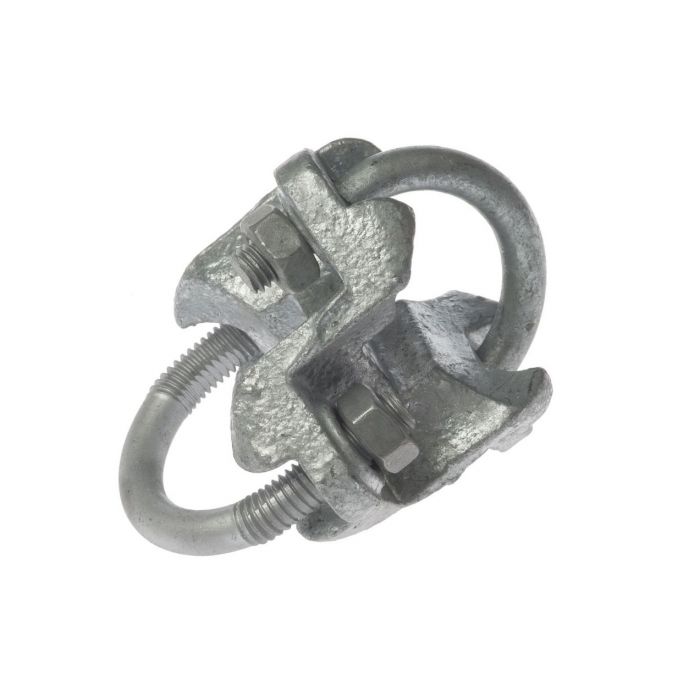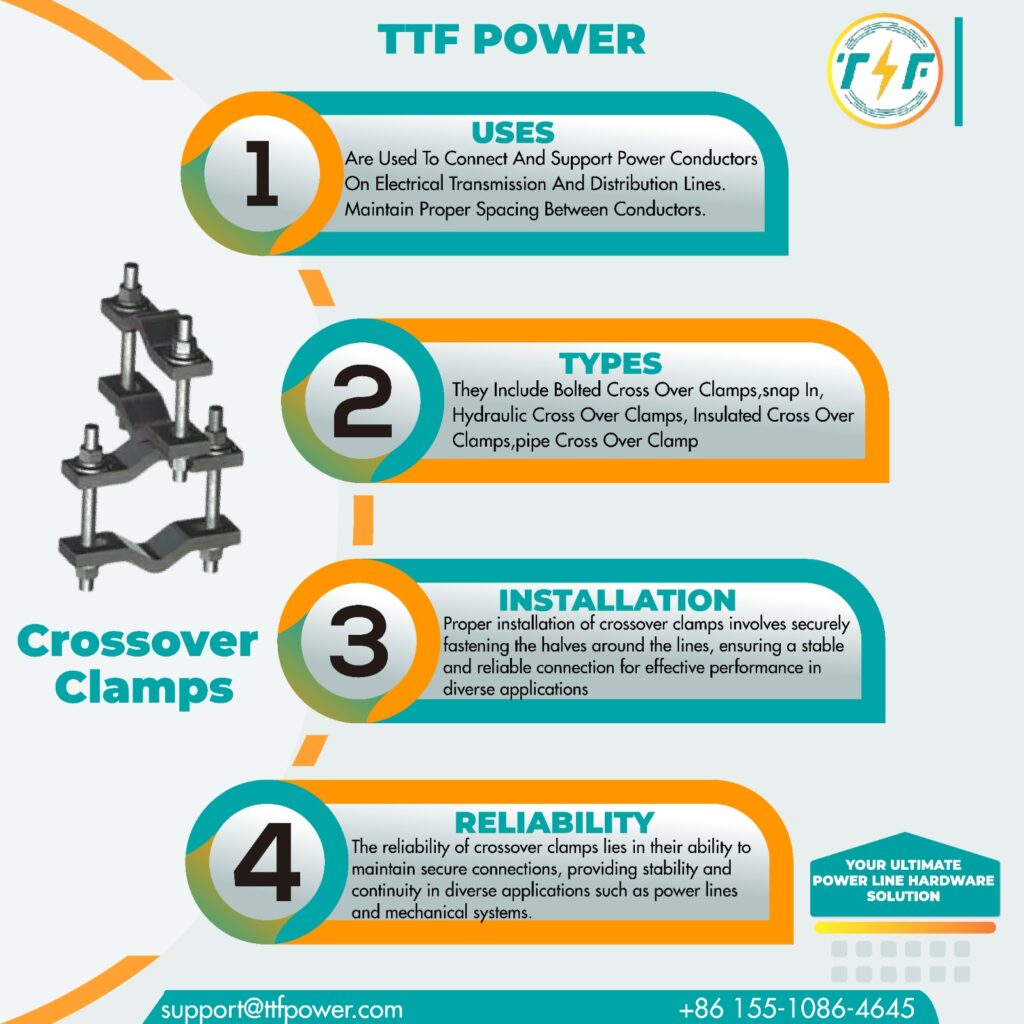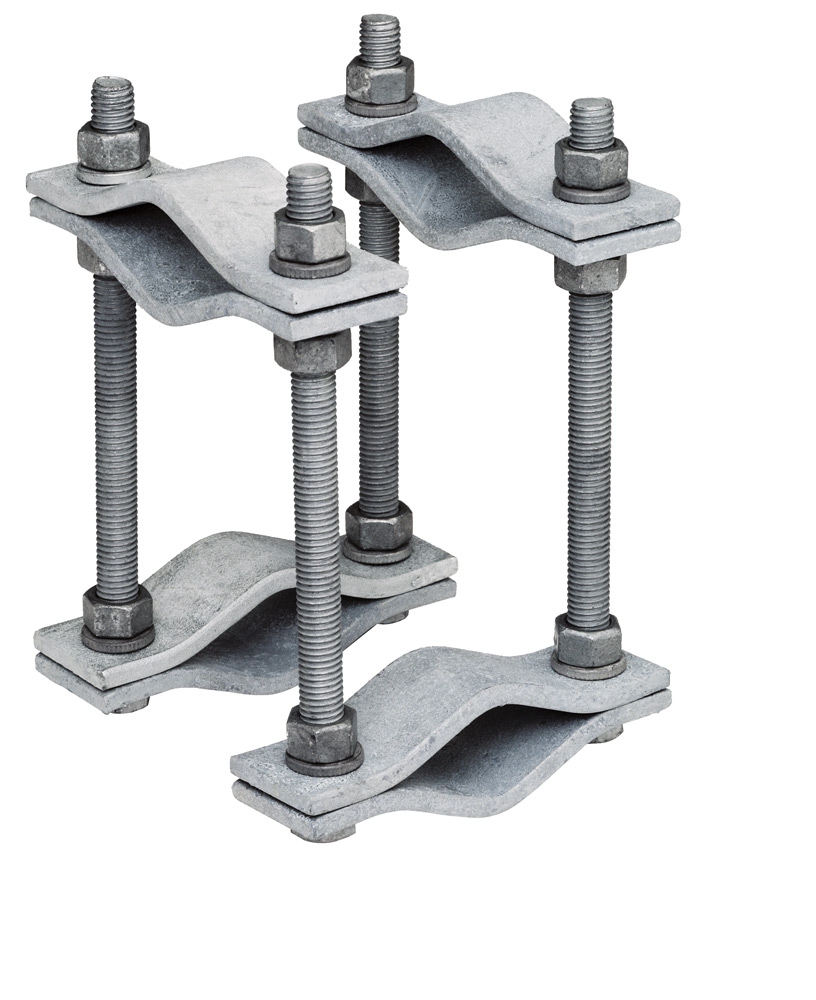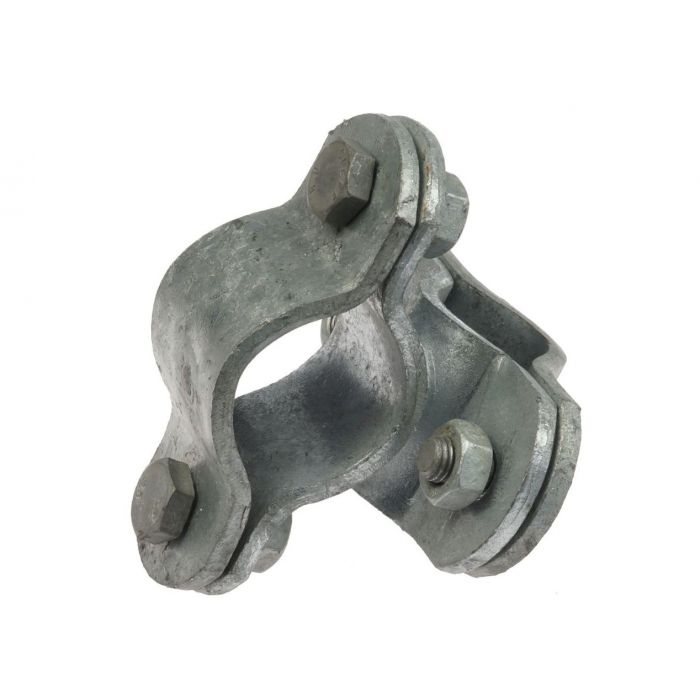
A crossover clamp is a component that secures two or more conductors crossing each other at an angle. It also offers support at crossover points where two lines intersect. Its main role is to maintain the separation and proper alignment of conductors. This helps to prevent contact and potential electrical interference. Their design varies depending on the specific requirements of the transmission system. Crossover clamps provide a secure grip on the conductors while allowing for some degrees of movement. This helps them to accommodate thermal expansion and contraction. The clamp also helps to prevent abrasion and wear to conductors. It has a U-shaped design with grooves to cradle each conductor. It from materials such as galvanized steel or aluminum that offer strength and corrosion resistance. The clamps find use in application such as power transmission lines, telecommunication and construction.
Use of crossover clamp
Crossover clamps have various uses in the electrical industry and other sectors. The common use for the clamp is securing overhead electrical transmission lines. the following are the common uses and importance of using crossover clamps.

- Overhead power transmission – the clamps prevent movement, wear and electrical faults on power systems. This enhances safety, extends conductor movement, wear and electrical faults.
- Marine rigging – they help secure the lines and cables on boats and other marine vessels. This enhances operational safety and prevents entanglement
- Preventing abrasion – the clamps reduce friction and wear between the conductors. This helps to improve the lifespan of the conductors and reduce the need for frequent maintenance.
- Guy wire support – crossover clamps hep to secure the guy wires that stabilize antennas, towers and other tall structures.
- Securing crossovers – the main function of the clamp is to hold two or more conductor wires securely in place. This prevents them from swinging, vibrating or rubbing against each other. Crossovers may cause electrical faults, disrupt power transmission and damage the conductors.
- Providing electrical insulation – the clamps have insulating materials to physically separate the conductors and prevent electrical leakage.
- Telecommunication lines – the clamps help in fixing and supporting fiber optic cables and other telecommunication lines.
Types of crossover clamp
Crossover clamps come in various types and designs that provide different advantages to electrical systems. Each type has designs specific for different purposes and conductor configuration. The selection of a particular type depends on various factors like conductor material, diameter, voltage level, application and environmental conditions. The following are the various types of crossover clamps.

- Insulating crossover clamps – the clamps contain insulating materials such as polymer composites between the clamp body and the conductor grooves. They also prevent electrical leakage between conductors
- Aluminum crossover clamps – these clamps are lighter than steel clamps which makes them suitable for long span installations. They provide excellent conductivity and corrosion resistance.
- Bolted type crossover clamp – these clamps use bolts to secure the conductors in place. They offer adjustability which allows flexibility in accommodating different conductor sizes.
- Compression type crossover clamp – the clamps use a compression mechanism to secure conductors in place. They have an outer compression sleeve that tightens around the conductor.
- Double crossover clamps – these clamps help to secure fur conductors crossing each other at to different angles. They offer a compact solution for complex conductor arrangement.
- Guy wire crossover clamps – these are clamps specifically designed for guy wires supporting antennas and tall structures. They may have extra features such as swivels or insulators.
Functions of crossover clamps
Crossover clamps are a crucial part of the overhead transmission lines installations. They ensure safety, reliability and efficiency of the electrical connections. This helps to enhance the smooth and safe flow of power to homes and businesses. Additionally, it is important to understand the functions of the clamp before selection. The following are the various functions of crossover clamps.

- Holding conductors in line – crossover clamps secure two or more conductors where they cross each other. This prevents swinging and swaying of the conductors from conditions such as wind and earthquakes. The clamps prevent the conductors from rubbing each other to prevent abrasion and wear.
- Insulating – some of the clamps have special insulating coats to prevent any electrical leakage between conductors. This is important to use for high voltage lines where there can be sparks.
- Alignment and support – the clamps provide support to conductors at crossover points. This helps to maintain proper alignment of efficient energy transfer.
- Emergency repair – crossover clamps help in case of emergency repairs. This is because they provide a quick and temporary solution which allows for restoration of service.
- Enhanced system reliability – the clamps ensure proper conductor separation, alignment and support. This contributes to the overall reliability of the transmission system.
- Thermal expansion and contraction – the clamps allow for controlled movement of conductors due to thermal expansion and contraction. The flexibility prevents damage to the transmission lines caused by temperature variations.
- Guy wire support – crossover clamps help in stabilizing guy wires supporting antennas and towers for unwavering support.
- Fiber optic cables – the clamps work in telecommunications to gently cradle fiber optic cables. This helps to ensure the vital data flow has no interruptions.
- Marine applications – crossover clamps secure the lines and cables on boats and other marine vessels.
- Cost effectiveness – the clamps prevent costly repairs, disruptions and safety hazards. This makes them a suitable choice for long term health of electrical systems.
Materials for crossover clamps
As already mentioned, crossover clamps are from high strength materials such as steel, polymer composites, galvanized steel or aluminum. The selection of a particular material for crossover clamp depends on various factors. The selected material should enhance the safety and functionality of your application. The following are the factors influencing the material for a crossover clamp.

- Conductor material – most of the crossover clamps are for specific conductor materials like steel wire ropes or aluminum conductors. The selected material should be similar to the conductor material to prevent abrasion. It also helps to ensure proper grip and conductivity.
- Environmental conditions – select materials that offer corrosion resistance and strength like stainless steel or aluminum. This is especially for areas like coastal areas or areas with extreme temperatures.
- Application – understand the application requirements before selecting the materials for crossover clamps. The clamps offer different benefits for the different applications in the industry. These applications include power lines, guy wires, marine rigging and telecommunications.
- Voltage level – high voltage lines require high strength materials like galvanized steel to handle the electrical load safely.
- Costs – steel is generally cheaper than aluminum and other composite materials. They may be more effective in specific applications due to their weight and conductivity advantages.
Challenges and issues facing crossover clamps
Crossover clamps ensure the safety and reliability of electrical systems. They however face several challenges and issues that affect their performance. Addressing these challenges ensures the clamps continue to play their role in maintaining the safety, reliability and efficiency of our electrical infrastructure. This may involve strategies like material innovations, monitoring and inspection, remote maintenance and design optimization. Additionally, it is advisable to consult industry professionals for guidance on the challenges of the selected crossover clamp. The following are the challenges facing crossover clamps.

- Design and performance limitations – mismatch with the conductor type can lead to insufficient grip and potential slippage. Some of the designs may not offer adequate electrical insulation which poses safety risks.
- Material – some of the applications require clamps with strength for high tension lines. materials like steel may not be adequate for such applications. Materials like polymer composites offer insulation but can introduce extra resistance at connection points.
- Environmental stresses – presence of extreme temperatures, corrosion, wind and ice my limit the use of crossover clamps. Temperatures can lead to expansion and contraction which loosens their grip on conductors. Exposure to salt, moisture and other corrosive elements can weaken the material.
- Installation and maintenance – some challenges may include accessibility, inspection limitations and corrosion protection. This may lead to delays in maintenance and inspections, undetected flaws and short-term effectiveness.
Frequently asked questions
Crossover clamps help to secure two or more cables crossing each other at an angle. They work in power line construction, telecommunications and other applications in need of reliable cable support.
There are several types of clamps used in various applications. These include wire rope crossover clamps, guy wire crossover clamps, fiber optic crossover clamps and insulating crossover clamps.
Some of the crossover clamps have insulating materials that physically separate the conductors and prevent electrical leakage.
Crossover clamps find use in various applications such as telecommunication lines, power line construction, guy wire support, marine rigging and suspension bridges.
Crossover clamps are from various materials such as galvanized steel, aluminum, polymer composites and stainless steel. Each of these materials have specific benefits such as strength, durability, corrosion resistance ad conductivity.
Some challenges include environmental stresses, installation and maintenance difficulties, design and performance limitations.